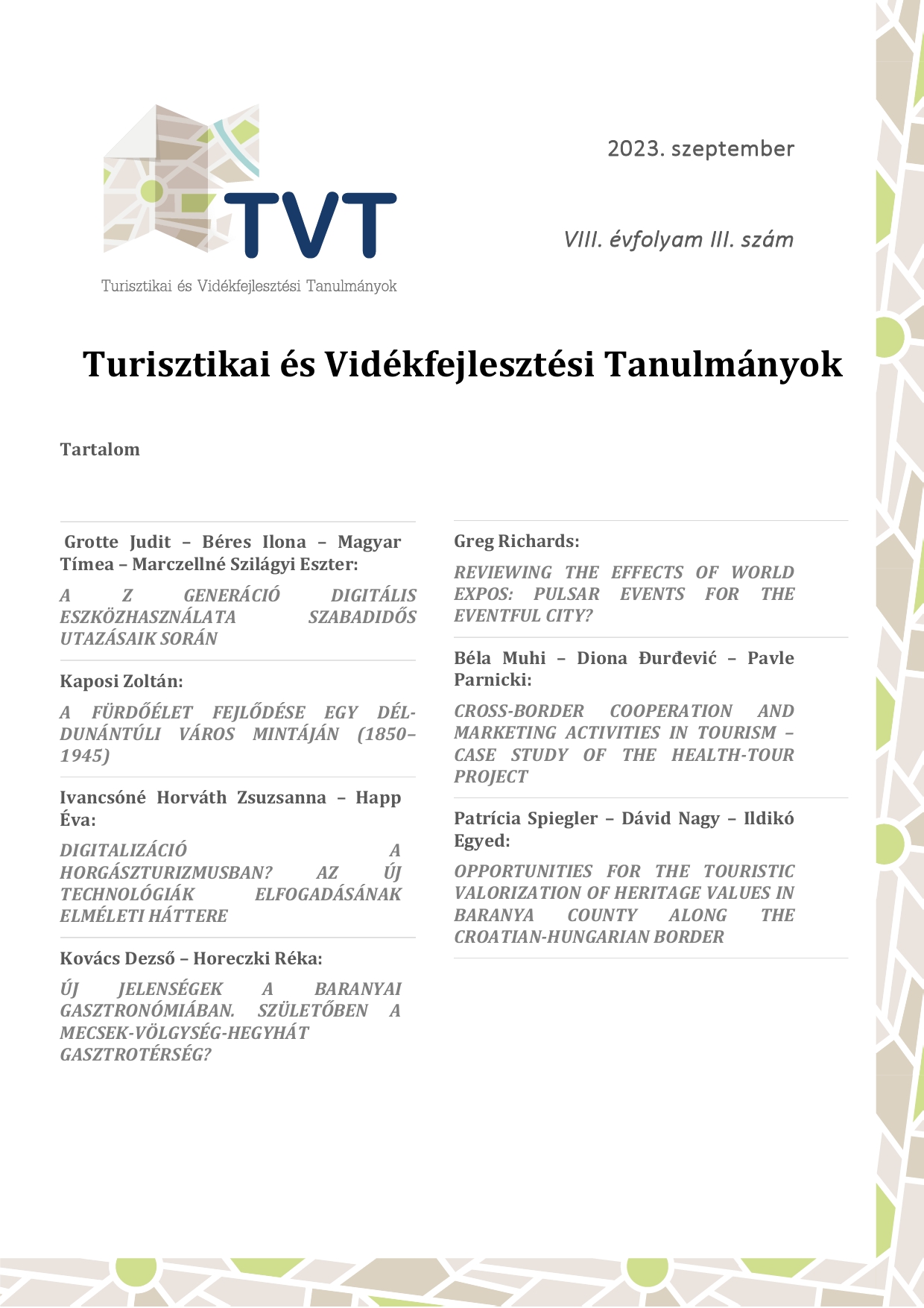The evolution of spa culture: the case of a Southern Transdanubian city (1850-1945)
DOI:
https://doi.org/10.15170/TVT.2023.08.03.02Keywords:
Nagykanizsa, spa culture, steam bath, lido, swimming pool, Lake BalatonAbstract
This study is about the history and development of tourism in the South-western Transdanubian region. We were curious about the changes that took place in the spa culture of Nagykanizsa, the largest city of the region in the age of embourgeoisement. It is known from the scientific literature that significant development programmes were begun in other Southern Transdanubian cities in the 19th and 20th centuries. Our research on Nagykanizsa was based on archival and statistical data sources, museum resources, alongside contemporary press sources. We established that throughout the almost one hundred years examined, many areas developed. In the beginning, the city population mostly used public and free water sources. From the 1870s the upper and middle classes had access to steam baths, which was a quality step forward. The steam bath operated from 1873 through the entire period. The period before WWI created the opportunity of public outdoor swimming and bathing on the shores of Lake Balaton: a significant amount of the population spent time in Balatonberény where Kanizsa-based entrepreneurs built hotels too. The construction of the city plumbing and sewage systems also created new opportunities. The real breakthrough was the construction of the indoor and outdoor swimming pools in the early 1930s, which attracted a wide array of people from different social classes. The construction of the Balatonberény holiday camp for children was launched by the city in the name of social welfare during WWII. Our research proves that even in a relatively underdeveloped region there could be gradual improvements in spa culture.


